
Kód: 01978651
CMOS Self-Powered Front-End Architecture for Subcutaneous Event-Detector Devices
Autor Jordi Colomer-Farrarons, Pere Lluís Miribel-Catal
A CMOS Self-Powered Front-End Architecture for Subcutaneous Event-Detector Devices presents the conception and prototype realization of a Self-Powered architecture for subcutaneous detector devices. The architecture is designed to ... celý popis
- Jazyk:
 Angličtina
Angličtina - Väzba: Pevná
- Počet strán: 163
Nakladateľ: Springer, 2011
- Viac informácií o knihe

139.46 €

Skladom u dodávateľa v malom množstve
Odosielame za 12 - 17 dní
Potrebujete viac kusov?Ak máte záujem o viac kusov, preverte, prosím, najprv dostupnosť titulu na našej zákazníckej podpore.
Pridať medzi želanie
Mohlo by sa vám tiež páčiť
-

Medical Geology
121.55 € -

Space: 10 Things You Should Know
11.14 € -23 % -

People Power
135.98 € -

Abarat
11.86 € -3 % -

Between the Acts and A Room of One's Own
15.03 € -

English for Law Enforcement Student's Book Pack
45.83 € -3 % -

House of Dreams
11.35 € -

Great Britain Mountain Biking
33.96 € -4 % -

History of Ancient Geography
65.17 € -

Social Intelligence and Interaction
122.47 € -

persona Inmigrante en Situacion Administrativa Irregular -ISAI-
128 € -

Polyreprasentation, Relevanz-Approximation und aktives Lernen im Vektorraummodell des Information-Retrievals
411.64 € -

Kooperation und Egoismus
121.35 € -

Reconquista
27.31 € -4 %
Darujte túto knihu ešte dnes
- Objednajte knihu a vyberte Zaslať ako darček.
- Obratom obdržíte darovací poukaz na knihu, ktorý môžete ihneď odovzdať obdarovanému.
- Knihu zašleme na adresu obdarovaného, o nič sa nestaráte.
Viac informácií o knihe CMOS Self-Powered Front-End Architecture for Subcutaneous Event-Detector Devices
Nákupom získate 345 bodov
 Anotácia knihy
Anotácia knihy
A CMOS Self-Powered Front-End Architecture for Subcutaneous Event-Detector Devices presents the conception and prototype realization of a Self-Powered architecture for subcutaneous detector devices. The architecture is designed to work as a true/false (event detector) or threshold level alarm of some substances, ions, etc... that are detected through a three-electrodes amperometric BioSensor approach. The device is envisaged as a Low-Power subcutaneous implantable application powered by an inductive link, one emitter antenna at the external side of the skin and the receiver antenna under the skin. §The sensor is controlled with a Potentiostat circuit and then, a post-processing unit detects the desired levels and activates the transmission via a backscattering method by the inductive link. All the instrumentation, except the power module, is implemented in the so called BioChip. Following the idea of the powering link to harvest energy of the magnetic induced link at the implanted device, a Multi-Harvesting Power Chip (MHPC) has been also designed.A CMOS Self-Powered Front-End Architecture for Subcutaneous Event-Detector Devices presents the conception and prototype realization of a Self-Powered architecture for subcutaneous detector devices. The architecture is designed to work as a true/false (event detector) or threshold level alarm of some substances, ions, etc... that are detected through a three-electrodes amperometric BioSensor approach. The device is envisaged as a Low-Power subcutaneous implantable application powered by an inductive link, one emitter antenna at the external side of the skin and the receiver antenna under the skin. §The sensor is controlled with a Potentiostat circuit and then, a post-processing unit detects the desired levels and activates the transmission via a backscattering method by the inductive link. All the instrumentation, except the power module, is implemented in the so called BioChip. Following the idea of the powering link to harvest energy of the magnetic induced link at the implanted device, a Multi-Harvesting Power Chip (MHPC) has been also designed.
 Parametre knihy
Parametre knihy
Zaradenie knihy Knihy po anglicky Medicine Nursing & ancillary services Biomedical engineering
139.46 €
- Celý názov: CMOS Self-Powered Front-End Architecture for Subcutaneous Event-Detector Devices
- Podnázov: Three-Electrodes Amperometric Biosensor Approach
- Autor: Jordi Colomer-Farrarons, Pere Lluís Miribel-Catal
- Jazyk:
 Angličtina
Angličtina - Väzba: Pevná
- Počet strán: 163
- EAN: 9789400706859
- ISBN: 9400706855
- ID: 01978651
- Nakladateľ: Springer
- Hmotnosť: 940 g
- Rozmery: 235 × 155 × 20 mm
- Dátum vydania: 25. February 2011
Obľúbené z iného súdka
-

The Death of Death
24.55 € -15 % -

Safety Risk Management for Medical Devices
146.11 € -9 % -

Ultimate BMAT Guide - 600 Practice Questions
34.37 € -4 % -

Corneal Biomechanics and Refractive Surgery
70.80 € -

Biomedical Engineering
89.42 € -

Medical Device Guidelines and Regulations Handbook
179.57 € -

Medical Devices
131.17 € -
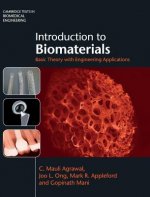
Introduction to Biomaterials
97.92 € -

Biodesign
103.13 € -

Comparative Kinesiology of the Human Body
194.10 € -
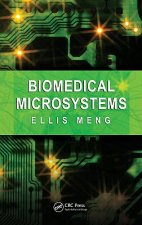
Biomedical Microsystems
179.57 € -

Wearable Robotics
275.76 € -

Analog Electronics for Radiation Detection
112.04 € -

Cell Culture Technology
83.69 € -

Organ Tissue Engineering
636.55 € -
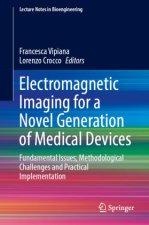
Electromagnetic Imaging for a Novel Generation of Medical Devices
204.95 € -
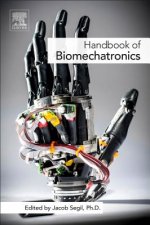
Handbook of Biomechatronics
185.81 € -

Science and Principles of Biodegradable and Bioresorbable Medical Polymers
364.68 € -

Novel Biomaterials for Regenerative Medicine
278.62 € -

Glucose Monitoring Devices
179.88 € -

Air-Puff Tonometers
203.72 € -

Introduction to Clinical Engineering
108.76 € -

Beginner's Guide to Data Agglomeration and Intelligent Sensing
183.25 € -

Handbook of Low-Level Laser Therapy
519.08 € -

Clinical Kinesiology and Biomechanics
119.30 € -

Clinical Engineering Handbook
275.76 € -

Polyurea
260.82 € -

Safety Risk Management for Medical Devices
207.20 € -

Artificial Intelligence in Dentistry
226.95 € -

Hydrogels for Wound Healing
379.92 € -

Brain Seizure Detection and Classification Using EEG Signals
234.62 € -

Medical Devices and In Vitro Diagnostics
459.74 € -
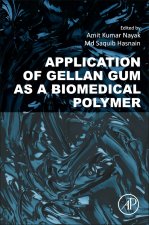
Gellan Gum as a Biomedical Polymer
144.17 € -4 % -

Synthetic Polymers in Drug and Biotherapeutics Delivery
234.62 € -4 % -

Recent Developments and Achievements in Biocybernetics and Biomedical Engineering
214.46 € -
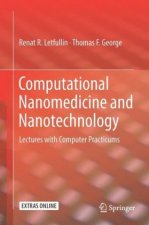
Computational Nanomedicine and Nanotechnology
119.30 € -

Building Tissues
192.26 € -

Nanotechnology in Biology and Medicine
271.36 € -

Advances in Artificial Intelligence
245.77 € -

Artificial Intelligence-Based Brain-Computer Interface
248.33 € -

Usability Testing of Medical Devices
255.70 € -

Neural Network Modeling and Identification of Dynamical Systems
207.20 € -

Introduction to Instrumentation and Measurements
255.70 € -

Atomic Force Microscopy in Molecular and Cell Biology
121.55 € -
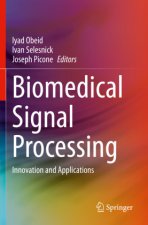
Biomedical Signal Processing
164.53 € -

Chitosan-Based Nanoparticles for Biomedical Applications
349.43 € -

Medical Device Design
170.46 € -

Virtual, Augmented Reality and Serious Games for Healthcare 1
276.98 € -

Synthetic Biology
121.55 €
Osobný odber Bratislava a 2642 dalších
Copyright ©2008-24 najlacnejsie-knihy.sk Všetky práva vyhradenéSúkromieCookies


 21 miliónov titulov
21 miliónov titulov Vrátenie do mesiaca
Vrátenie do mesiaca 02/210 210 99 (8-15.30h)
02/210 210 99 (8-15.30h)